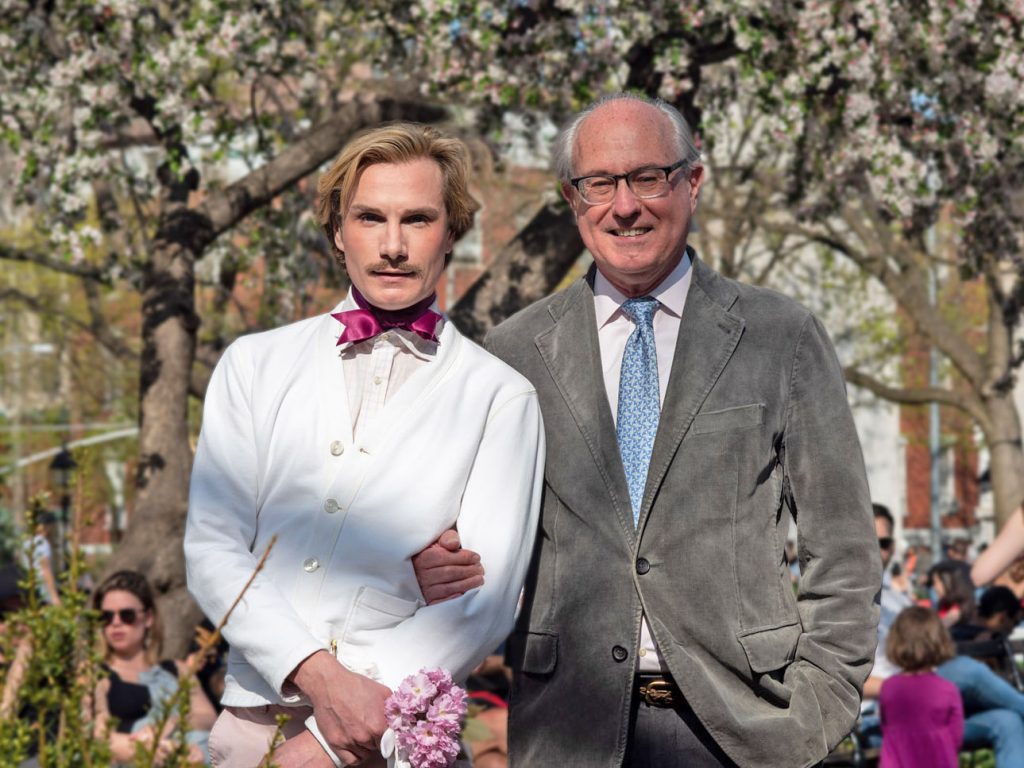
From Chinese Ceramics to Modern Dance
North Carolina native Smith Freeman ’68, ’72 (J.D.) began collecting ancient Chinese ceramics in the 1980s, when he was living in Zurich and traveling the world as the chief international trust officer of Citibank.
During a routine visit to a local gallery, he was drawn to a wine jar from the Zhou dynasty (1046-256 BCE).
“I was shocked that you could buy a 2,000-year-old beautiful object for $2,000,” Freeman recalled. “I thought, ‘This is extraordinary; there is nothing made today that can match it.’”
Over the next decade, Freeman sought out and purchased almost 40 pieces of Chinese ceramics dating from the Zhou dynasty (1046–256 BCE) to the Yuan (1271–1368 CE).
He and his husband, fashion designer Austin Scarlett, lived in a New York apartment surrounded by these objects for years. When the couple started considering moving back to Europe, Freeman was hesitant to store the collection.
“I was the chief international officer of Citibank before I was the chief fiduciary officer of U.S. Trust/Bank of America,” he explained. “Fiduciary means that you have a responsibility to your clients and to any property — it’s not your own, really. This collection wasn’t really my property to hide away or risk hoarding in any way.”
Freeman was interested in donating his collection to his home state. He reached out to the North Carolina Museum of Art and, much to his surprise and delight, was told that the Ackland Art Museum has the largest Asian collection in North Carolina and one of the most important in the southeast United States.
Freeman has donated 36 pieces — almost his entire collection — to the Ackland.
“I grew up in a small town and would never have seen these objects had I not left North Carolina,” Freeman shared. “Once I learned the Ackland was the best repository for my collection, I appreciated that people — particularly students — would be able to see it. Seeing these pieces up-close is not the same as looking at a picture on a page or a slide in an art history class.”
Ackland Upstairs enables UNC-Chapel Hill faculty to have art installed specifically for the in-person use of their classes.
“If you’re there looking at something that is 2,000 years old, it’s astounding,” Freeman added, “especially if it’s a beautiful object that someone made a couple of millennia ago.”
Freeman and Scarlett are now living in North Carolina, and their contributions to the Ackland have expanded.
Freeman serves as the treasurer of the Ackland’s National Advisory Board, and he is especially fond of the Ackland’s focus on interdisciplinary activities, such as the exhibition The Beautiful Brain in spring 2019.
Freeman and Scarlett recently sponsored a performance by internationally renowned choreographer Jonah Bokaer, who is known for merging choreography with the visual arts and design. The piece was performed in the ART& space during She Who Tells a Story: Women Photographers from Iran and the Arab World. Scarlett designed costumes for the performers.
Freeman described the Ackland as “a gem of a museum.”
“It’s small and precious, but it has a collection of more than 19,000 objects, and only a miniscule percentage of that can be displayed. The continued engagement, the continued interdisciplinary work, the continued outreach to community — all are important efforts that are going well. But at the end of the day, the University, the community and a lot of the rest of us need to commit to an expansion of the physical facility itself.”

Photo of Austin Scarlett and Smith Freeman, top of page, courtesy of Smith Freeman. Performance photo of Jehan Sadat in Three Acts, choreographed by Jonah Bokaer, a site-specific performance at the Ackland Art Museum with costumes by Austin Scarlett, inside the exhibition She Who Tells a Story: Women Photographers from Iran and the Arab World. Photo by Michael Rank.
